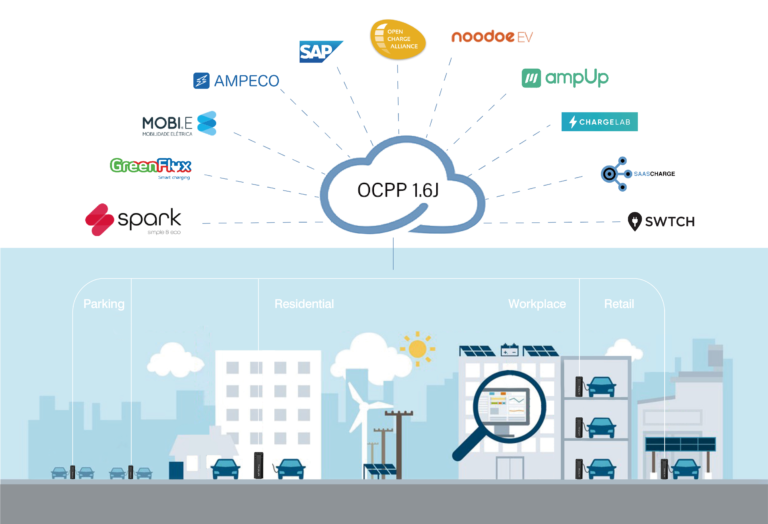OCPP Enabled IOT Platform


R&D Corner
-
OCPP is an open protocol, which means that it is not proprietary and can be used by anyone without licensing fees or restrictions.
OCPP (Open Charge Point Protocol) is a protocol used for communication between electric vehicle charging stations and a central management system. It defines a set of messages and message flows that can be used to manage the charging of electric vehicles, including starting and stopping a charging session, requesting the status of a charging station, and sending pricing information.
In order to connect an IoT platform to OCPP-enabled devices, the following elements are typically required:
An OCPP-compliant charging station, which is the physical device that is used to charge electric vehicles.
A central management system (CMS), which is a software application that is used to manage the charging of electric vehicles. The CMS is typically hosted on a server and communicates with the charging stations using the OCPP protocol.
A communication infrastructure, which is the network that connects the charging stations to the CMS. This can include a local area network (LAN), a wide area network (WAN), or a combination of both.
An IoT platform, which is a software application that provides the underlying technology for connecting, managing, and analyzing the data from the charging stations. The IoT platform typically includes features such as data storage, data processing, data visualization, and machine learning capabilities.
Application programming interfaces (APIs), which are the means by which the various components of the system communicate with each other. APIs enable the IoT platform to communicate with the CMS and the charging stations, and vice versa, allowing the system to control and monitor the charging of electric vehicles.
It is not necessarily required for billing and charging functions to be developed on the CMS side. The OCPP protocol defines a set of messages and message flows that can be used to manage the charging of electric vehicles, but it does not specify how billing and charging should be implemented. This means that the specific billing and charging functions can be implemented in different ways depending on the requirements of the system.
In some cases, it may be more appropriate to implement billing and charging functions on the CMS side, while in other cases it may be better to implement them on the charging station side. The best approach will depend on the specific requirements of the system, such as the types of electric vehicles that are being charged, the billing and payment methods that are being used, and the level of control and flexibility that is desired. Ultimately, the decision about where to implement billing and charging functions will depend on the specific requirements and constraints of the system.
Designing an IoT platform from zero to production that connects to OCPP-enabled devices typically involves the following steps:
Identify the requirements and constraints of the system, including the types of electric vehicles that will be charged, the number of charging stations, the communication infrastructure, the billing and payment methods, and any security or compliance requirements.
Choose an OCPP-compliant CMS and charging stations that meet the requirements of the system.
Design the communication infrastructure that will connect the charging stations to the CMS, including the network topology, the protocols and standards that will be used, and any security measures that will be implemented.
Choose an IoT platform that has the features and capabilities required to connect, manage, and analyze the data from the charging stations.
Develop the APIs that will be used to enable the different components of the system to communicate with each other, including the charging stations, the CMS, and the IoT platform.
Test the system to ensure that it functions as expected and meets the requirements of the system. This may include testing the communication between the charging stations and the CMS, testing the APIs, and testing the integration of the IoT platform with the rest of the system.
Deploy the system to production, including installing the charging stations, configuring the CMS, and setting up the IoT platform.
Monitor the system to ensure that it continues to function as expected and address any issues that may arise. This may include monitoring the charging of electric vehicles, monitoring the performance of the charging stations and the CMS, and monitoring the data from the charging stations using the IoT platform.
Continuously improve the system by gathering feedback from users, analyzing the data from the charging stations, and making changes to the system as needed. This may include adding new features, improving the performance of the system, and enhancing security and compliance.
